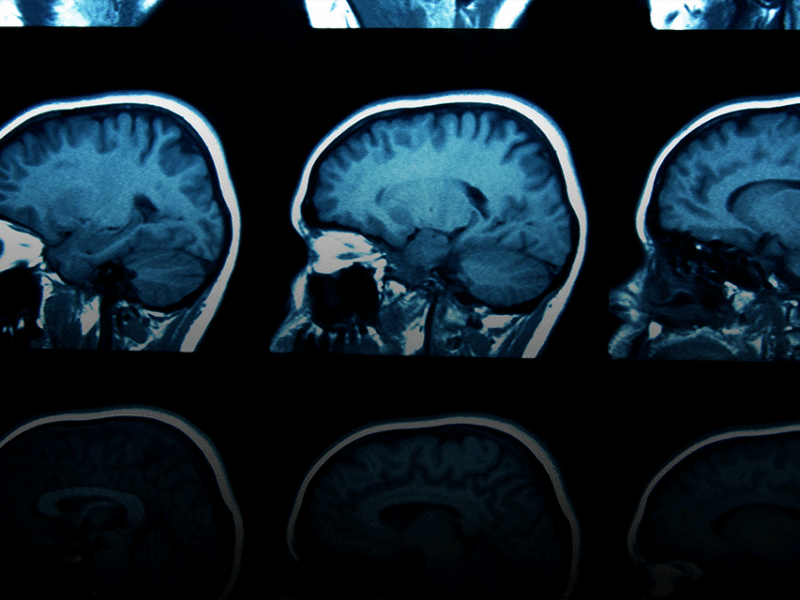Discovering the Genetic Causes of Congenital Heart Defects
Discovering the Genetic Causes of Congenital Heart Defects https://pediatricsnationwide.org/wp-content/uploads/2022/07/AdobeStock_134232290-DNA-header-1024x575-1.gif 1024 575 Lauren Dembeck Lauren Dembeck https://pediatricsnationwide.org/wp-content/uploads/2021/03/Dembeck_headshot.gif- September 02, 2022
- Lauren Dembeck

By studying the genomes of children and members of their family, researchers have discovered novel disease genes in families impacted by cardiac defects.
Congenital heart disease is a leading cause of death in children under one year of age, and evidence supports a strong genetic component underlying this group of common developmental defects. However, historically, the diagnostic yield from genome sequencing studies of isolated congenital heart disease has been low.
“In individuals who have a non-syndromic left-sided heart defect, which makes up the majority of cases, previous studies identified causative genetic variants in fewer than 5% of cases,” explains Dr. Kim McBride, MD, division chief of Genetic and Genomic Medicine and principal investigator in the Center for Cardiovascular Research at Nationwide Children’s Hospital, who has been studying the genetics of cardiovascular malformations for over 20 years. “The contributions of individual genes to multiple phenotypes, complexities in gene expression patterns, and difficulty of accurately phenotyping newborns all contribute to this lack of diagnostic yield in these patients.”
In a collaborative effort, Dr. McBride, Vidu Garg MD, director of the Center for Cardiovascular Research and pediatric cardiologist in The Heart Center at Nationwide Children’s, and Peter White, PhD, genomics scientist and senior director in the Computational Genomics Group in the Steve and Cindy Rasmussen Institute for Genomic Medicine at Nationwide Children’s Abigail Wexner Research Institute, hypothesized that they would improve diagnostic yield by implementing a multiplex family approach, studying multiple affected and unaffected individuals in the same family.
They sequenced the genomes of selected individuals in families with multiple members affected by left-sided congenital heart disease. To narrow the search for genes relevant to the disease, they focused on the protein-coding regions of the genome (the exome), filtering genetic variants by population frequency, and using in silico predictive algorithms and publicly available databases of known genes and clinical features of patients impacted by pathogenic variants in those genes to generate a list of candidate disease-causing variants for validation.
“We found it was much more powerful way to discover the genetic changes responsible for the condition by sequencing a family,” says Dr. White. “Doing so reduces the genetic space that you have to search; for example, siblings share half of their genomes, so the genetic space when searching for variants contributing to a disease shared by two siblings would already be reduced by half.”
In 8 of 19 families (42%) studied, they were able to establish a well-known gene/phenotype link for a candidate variant or confirm a candidate variant’s effect on protein function. The findings were recently published in PLOS Genetics.
The variants in genes not previously described or firmly established as disease genes in the congenital heart disease literature included BMP10, CASZ1, ROCK1 and SMYD1. The team also found two plausible variants in different genes that segregated in the same family in two instances, suggesting the heart defects in these individuals may be caused by direct or indirect interactions between the genes.
“Familial cases offer a way to identify the genetic origins of disease, allowing us to potentially provide knowledge for the family and also to move toward using that information to develop therapies,” says Dr. Garg. “This approach doesn’t apply only to congenital heart disease, it can be used as a template for other familial conditions as well, and we now have the technology to identify candidate disease-causing variants very quickly because we now have improved methods for interpreting the genomic data.”
The laboratories of Dr. McBride and Dr. Garg are currently conducting additional functional genomics follow-up experiments using induced pluripotent stem cells and animal models to validate interactions between genetic variants identified in the study.
“This study underscored the need to conduct functional validation experiments. Two of the variants we identified and tested turned out not to cause disease,” adds Dr. McBride, who is also an associate professor in the Department of Pediatrics at The Ohio State University. “We as a community need to be thorough and conduct functional studies to support or refute the bioinformatic predictions when working to discover novel disease genes.”
Reference
Gordon DM, Cunningham D, Zender G, Lawrence PJ, Penaloza JS, Lin H, Fitzgerald-Butt SM, Myers K, Duong T, Corsmeier DJ, Gaither JB, Kuck HC, Wijeratne S, Moreland B, Kelly BJ; Baylor-Johns Hopkins Center for Mendelian Genomics, Garg V, White P, McBride KL. Exome sequencing in multiplex families with left-sided cardiac defects has high yield for disease gene discovery. PLoS Genetics. 2022 Jun 23;18(6):e1010236. doi: 10.1371/journal.pgen.1010236.
About the author
Lauren Dembeck, PhD, is a freelance science and medical writer based in New York City. She completed her BS in biology and BA in foreign languages at West Virginia University. Dr. Dembeck studied the genetic basis of natural variation in complex traits for her doctorate in genetics at North Carolina State University. She then conducted postdoctoral research on the formation and regulation of neuronal circuits at the Okinawa Institute of Science and Technology in Japan.
-
Lauren Dembeckhttps://pediatricsnationwide.org/author/lauren-dembeck/
-
Lauren Dembeckhttps://pediatricsnationwide.org/author/lauren-dembeck/
-
Lauren Dembeckhttps://pediatricsnationwide.org/author/lauren-dembeck/
-
Lauren Dembeckhttps://pediatricsnationwide.org/author/lauren-dembeck/January 29, 2019







